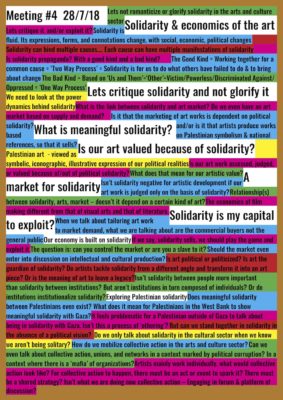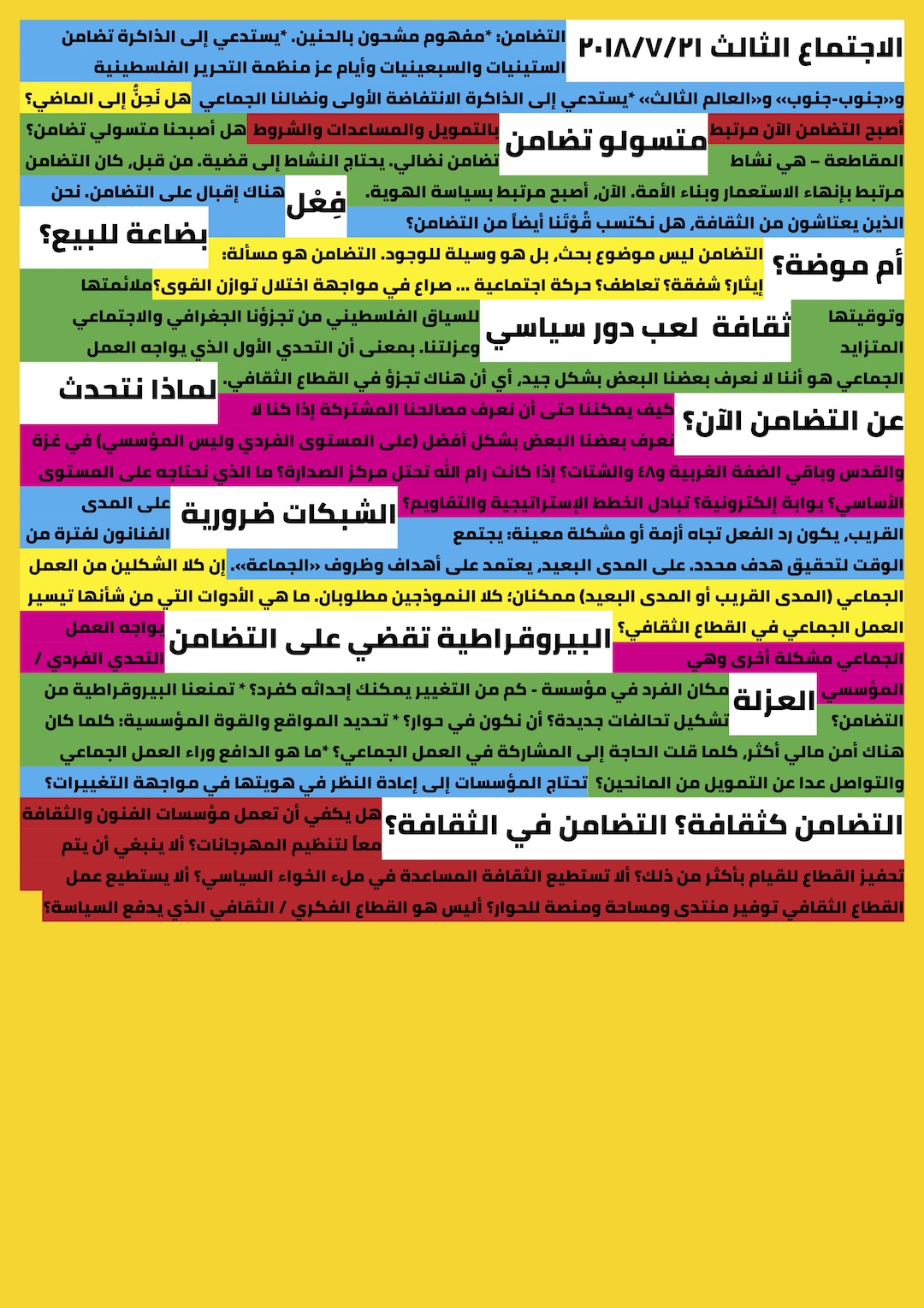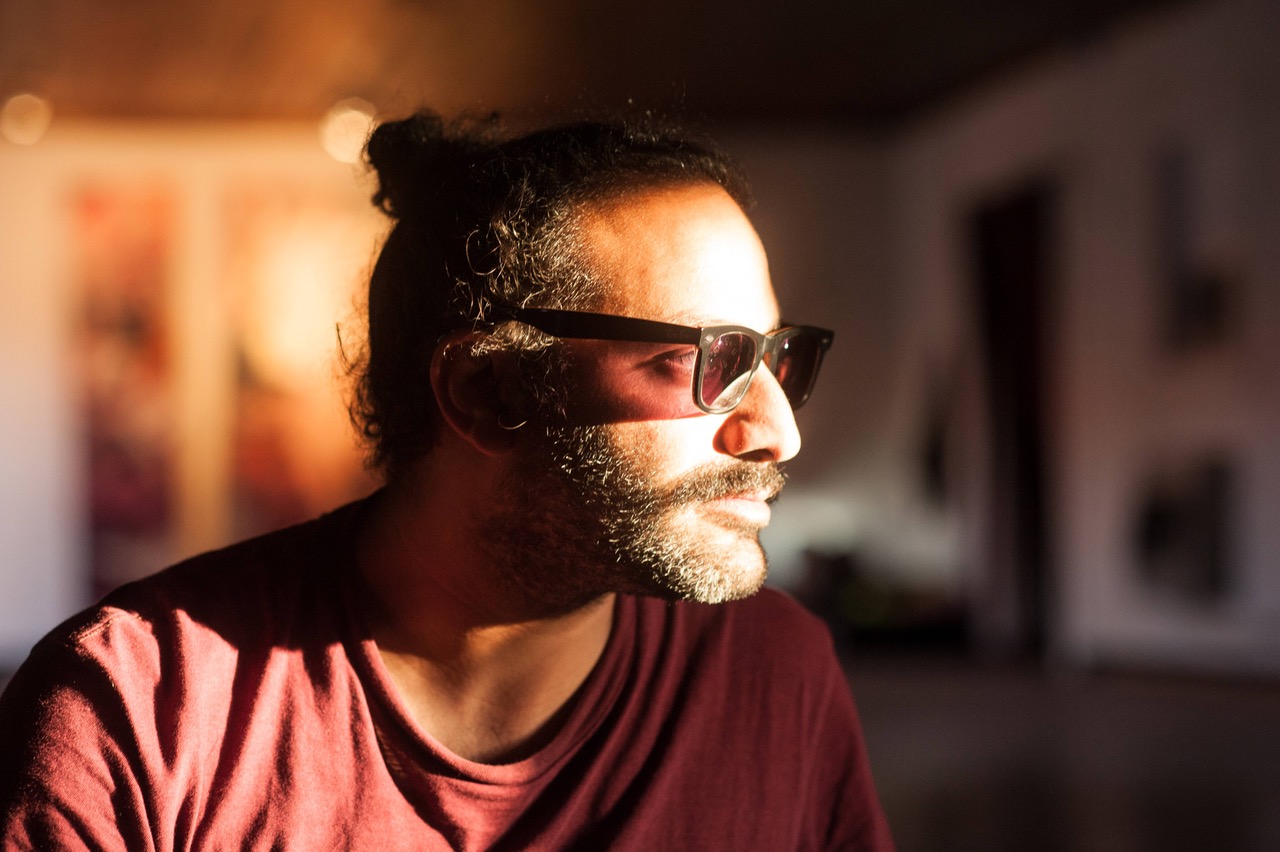Search
To search for an exact match, type the word or phrase you want in quotation marks.
A*DESK has been offering since 2002 contents about criticism and contemporary art. A*DESK has become consolidated thanks to all those who have believed in the project, all those who have followed us, debating, participating and collaborating. Many people have collaborated with A*DESK, and continue to do so. Their efforts, knowledge and belief in the project are what make it grow internationally. At A*DESK we have also generated work for over one hundred professionals in culture, from small collaborations with reviews and classes, to more prolonged and intense collaborations.
At A*DESK we believe in the need for free and universal access to culture and knowledge. We want to carry on being independent, remaining open to more ideas and opinions. If you believe in A*DESK, we need your backing to be able to continue. You can now participate in the project by supporting it. You can choose how much you want to contribute to the project.
You can decide how much you want to bring to the project.

When I first became the chairperson and acting director of Khalil Sakakini Cultural Centre, Ramallah, Palestine, in Sept 2015, and later the director in march 2018 till end of 2019, I didn’t know what exactly needed to be done with a collapsing cultural institution. At that time the centre had been struggling with funding for a couple of years, and this situation exposed the fragility of our cultural economy and the need for alternatives. By 2014 the funds for the cultural scene in Palestine and the region had been affected by the Arab spring, as funders and their priorities in the region shifted. This change put the cultural institutions in Palestine, Lebanon, and Egypt in an existential crisis. They were faced with the dilemma of continuing to operate while the donor based economy that they were established under was shrinking. Simultaneously, philanthropists who somewhat supported small and mid-sized institutions began building their own mega institutions. Museums and expansive cultural institutions started replacing smaller ones. International funds were centralized and funnelled into local administrative structures which replaced governmental ones.
During my time working there, the challenge was not only to keep the centre alive, institutions also die, but rather to keep it relevant, and transform the funding crisis from a monetary problem into a cultural and political question. This crisis is not a singular event, but rather an ongoing situation that is produced by political and historical changes. The institution needed to be reinvented, everything that was taken for granted had to be challenged and re-imagined. “The Total Work of the cultural institution” became the concept that we established and developed through this process, and it was about how to interlace the critique of the cultural institution within the practices of the institution itself. Constructs such as ‘audience’ had to be shifted from spectators into producers by involving them in the making of the programs and events, not only as volunteers with their time and body, but as producers of knowledge. Rethinking the notion of the audience opened up the institution to new possibilities, from being an institution whose mission is to produce activities that can draw in audiences, into becoming an infrastructure and a tool of production for cultural producers and artists; the spaces, the equipment, the legal status, the administrative structure, the budgets, the expertise, and the community around it, all became accessible and possible to use; and they, by their continuous movement, interaction, and meeting, bring in the bigger community in all its different aspects.

But this isn’t only an issue of the public. For the institution to be able to connect to its community and “Audiences”, the team had to be restructured in a way which allowed for cultural production as well as administrative work. So, instead of having a vertical division of the work, admin vs. cultural, a horizontal one has been practiced. Everyone in the team can become a cultural producer while doing some of the administrative work, and in this way, the heaviness of the administration work can be distributed to all the teams, while being able to engage culturally and critically with the institution and its political existence.
These changes reversed our understanding of sustainability; the distance between the community and the institution collapsed, and a new structure was imagined, one that does not have a steep hierarchy like a mountain, nor a flat one like a coast, but looks like the hills of the West Bank, where the relation between the team, the collective, and the individual is always balanced and in motion. Re-imagining a cultural institution is part of questioning the structures of state building and collectivity in Palestine and the region. The contradictory circumstances we live in: colonial and post-colonial simultaneously, where the institution building is still underway allows for alternate imaginative structures of collectivity. The cultural institution had to become a tool for the political, economical, and cultural change.
The total work of the cultural institution aims at understand the cultural institution as an ideological structure, to think with it, to challenge it, and to subvert it. The institution acts as if it is ahistorical, as if it has been functioning outside of the progression of time and politics, as if it is not a result of years of policy and regulation changes through the funding processes and requirements of the donors. This makes it act as if the crisis of the institution is in fact a crisis of culture itself, and therefore it becomes a superstructure that thinks that without its existence there won’t be culture and the civilized society will collapse.
The Donors economy has become one of the main tools of political intervention on many levels in Palestine and the world. The cultural institution as we know it now is a product of such economy, the institution became mostly an administrative body that aims to fulfil the governance policies and the bureaucratic work of reporting and maintaining the existence of the institution. This existence in itself becomes the question, it is a heavy and fragile one that always needs to be sustained with budgets, so the audience becomes the main justifier of relevance by becoming numbers, i.e. quantity that can be reported back to prove that the institution can reach out to the public without necessarily having to have an actual effect on the production of knowledge.
This makes one think of the ways cultural initiatives work as seeds for politically engaged groups. In such failed states (or non-states) and politically withdrawn societies, culture becomes the space where new and progressive politics can be practiced and investigated, not only as themes, but mainly as structures. Cultural practices become the soil for political groups to investigate and practice alternative and more imaginative ways and structures of working together and forming collective action and knowledge. So, I would like to think not only of politically engaged art, but also of culturally engaged politics, where one can think of the transformation that happened to the cultural scene from the beginning of the 90s at the end of the Lebanese civil war and the signing of the Oslo accord. By looking at this history, one can think how questions of governance, power structures, economy, and social networks have been and still can be challenged and re-purposed.
When one starts working, one tends to do so intuitively. But we were then faced with a situation where we were forced to ask ourselves: How do we put theory and critique in motion, in practice, but also create a theory and critique of that motion? How is one to be involved in the everyday politics of running a centre, while at the same time being able to think about it from a distance, as something we can learn from and build on? There was a cycle of crisis that we wanted to break. Inside the centre, one focuses on managing daily affairs and the physical space itself. Yet, on another level, there is an intellectual and theoretical work that exceeds the centre itself. This is what I’m referring to. The Total Work of the Cultural Institution can be reflected on, or indeed put into effect even in another institution, or country. The point is to talk about the general condition of the art and funding economy—to connect it to what goes on in Croatia, Romania, Lebanon, or wherever else, and to begin thinking about and working across bigger structures. It is about how to expand in a horizontal way; to be able to ask the question of how to work together.[1]Paragraph extracted from The Total Work of the Cultural Institution, conversation by Yazan Khalili and Rayya Badran for Makhzin magazine Issue #3, March, 2020

| ↑1 | Paragraph extracted from The Total Work of the Cultural Institution, conversation by Yazan Khalili and Rayya Badran for Makhzin magazine Issue #3, March, 2020 |
|---|

Yazan Khalili, Lives and works in and out of Palestine. He is an artist and cultural producer. His works has been exhibited in several major exhibitions, including among others: New Photography, MoMA 2018, Jerusalem Lives, Palestinian Museum, 2017, Shanghai Biennial 2016. He received a degree in architecture from Birzeit University in 2003 and in 2010 received his MA degree from the Centre for Research Architecture at Goldsmith’s College, and in 2015 his MFA degree at Sandberg Institute, Amsterdam. He was one of the founding members of Zan Design Studio (2005-2010), and the Radio AlHara online community radio 2020. In 2015, he co-organized Walter Benjamin in Palestine workshop and symposium, and has been the director of Khalil Sakakini Cultural Centre between 2015 until end of 2019. Currently he is the co-chair of the Photography department of the MFA program at Bard College, NY, and an artist in residence at the Rijksakademie, Amsterdam.
"A desk is a dangerous place from which to watch the world" (John Le Carré)